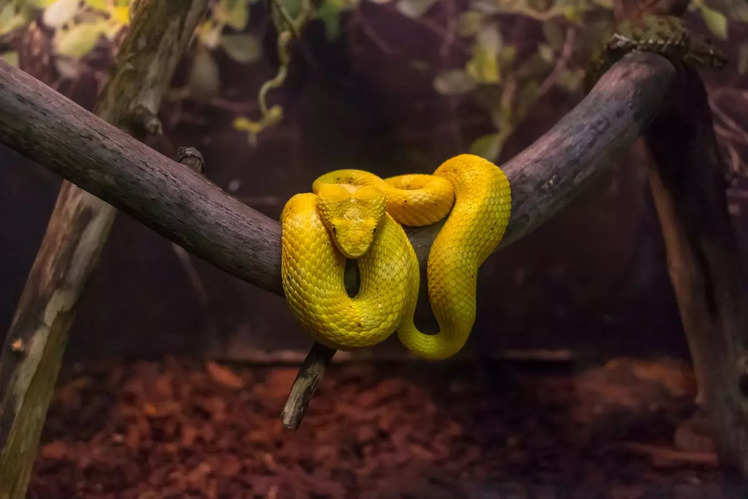Island Of Horror: Full Of Snakes, One At Every 11 Feet

Jan 10: Ilha da Queimada Grande, a stretch of land some 106 acres-big off the coast of São Paulo, Brazil is technically called “island of the big burn.” But its unofficial name is, Snake Island.
Estimates used to suggest, there were as many as 5 snakes per square meter on Queimada Grande, an actual survey says 1 snake per square meter. That means, within a walk of 11 feet in any particular direction on Queimada Grande, you will likely to encounter a snake.
Queimada’s primary full time residents are extremely venomous pit vipers called Bothrops insularis, or golden lanceheads. Snake Island is infamous for being off-limits to humans, save for occasional trips by the Brazilian navy—to check in on the local lighthouse—and a small number of approved scientific expeditions.
There are some really gruesome legends from folks over on the mainland, the family of the person who ran the lighthouse right before the government decided to automate in 1920—were literally stalked and killed by a gang of vipers. That’s probably just a macabre rumor, but the snakes are definitely capable of taking you out. We know that their closest relatives on the mainland can absolutely kill humans, and chemical analysis suggests the golden lancehead’s venom is more potent and faster-acting.
But while those urban legends are impossible to confirm, these freaky snakes do have a really intriguing backstory. Around 11,000 years ago, when sea levels were rising due to melting ice sheets after the last glacial maximum, the ocean cut off a strip of land from the rest of Brazil—Queimada Grande.
That shift trapped some number of snakes in the Genus Bothrops, which is a type of venomous pit viper found in the South and Central Americas. A new home for just some frogs, bugs, lizards, birds and a whole bunch of vipers.
So, on the one hand, there was nothing keeping these slithering predators from reproducing like crazy, which is how you end up with a snake per square meter. On the other hand, they didn’t have a lot of great food sources—juveniles could live on millipedes and such, but the biggest prey available to adults would be birds. That poses a bit of a problem.
Birds are not easy prey for a snake like the golden lancehead, which lacks a prehensile tail for skillfully navigating trees. Most snakes in this Bothrops genus hunt by biting their prey once, letting it go, and then stalking it to attack again as it weakens. A bird doesn’t have to be able to get very far to get out of a snake’s easy reach, and certainly isn’t easy to track with chemical trails like terrestrial prey.
Instead, it seems the snakes that thrived on this island were the ones able to keep prey in their mouths after that first bite. If that’s how you’re trying to hunt, extremely potent venom certainly doesn’t hurt your chances.
Despite their scary countenance, golden lanceheads are actually critically endangered. Snake Island is their only native habitat, and deforestation on the mainland has decreased the number of migratory birds, threatening their main food source. There’s also, naturally, a lot of inbreeding that could start to cause problems as the gene pool shrinks. And, of course, because humans are awful, there’s quite a lucrative poaching market for these vipers, simply because they’re rare.






